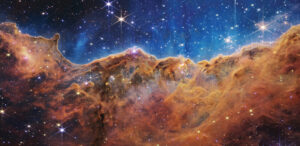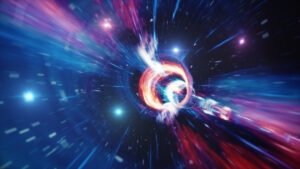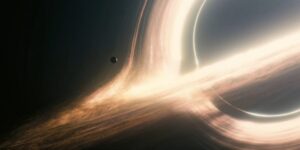The Cosmic Crucibles: Birth of Stars and Their Role in the Universe
9 min read
Stars, those luminous beacons that adorn the night sky, are not just celestial ornaments; they are the cosmic crucibles where the grand drama of the universe unfolds. From their birth in vast clouds of gas and dust to their spectacular deaths, stars play a central role in shaping the cosmos. In this exploration, we venture into the heart of stellar nurseries and witness the intricate processes that lead to the formation of these stellar giants. Join us as we delve into the fascinating world of star birth, star life, and star demise.
Stellar Nurseries: The Cosmic Incubators

Deep within the sprawling cosmos, in regions far removed from our terrestrial existence, there exists a place where the magic of star birth begins. These regions, known as stellar nurseries, are vast expanses of interstellar dust and gas, primarily composed of hydrogen and helium. Such celestial cradles serve as the birthplaces for stars, and they are characterized by their sheer size and extreme cold.
Within these stellar nurseries, colossal molecular clouds, often many light-years across, house the raw materials for star formation. These clouds consist of dust and gas, predominantly molecular hydrogen, and they play a pivotal role in the process of star creation. The birth of stars is initiated when the gravitational force acting on these massive clouds overcomes the opposing force of internal gas pressure. As gravity triumphs, it triggers a cascade of events that will ultimately give birth to new stars.
The formation of stars within molecular clouds is not a solitary event but rather a communal endeavor. Here, gravity molds the gas and dust into clumps, setting the stage for the next act in the cosmic drama – the formation of protostars.
Protostars: The Stellar Embryos
Within the cold and dense core of a molecular cloud, the first signs of a star’s birth emerge – the protostar. Protostars are like cosmic embryos, precursors to the brilliant stars they will eventually become. The journey from molecular cloud to protostar is a complex and dynamic process that unfolds over thousands of years.At the heart of this transformation is the gravitational collapse of a dense core within the molecular cloud. As this core contracts, it becomes the central embryonic body, enveloped by a surrounding disk of gas and dust. This disk is where the bulk of the material that will eventually form the star gathers.
Heat and pressure begin to build within the core as it contracts. This intensifies as the protostar draws in matter from the surrounding disk. As the core’s temperature rises, it emits infrared radiation, making protostars observable to astronomers using specialized instruments and telescopes.
The protostellar phase is a crucial juncture in a star’s life, as it marks the transition from an inert cloud of gas and dust to a nascent star with the potential for radiant existence. During this phase, the young star undergoes a period of intense mass accretion as it continues to feed on its surrounding material.
The Birth of Stars: Igniting the Fusion Furnace
The journey from a protostar to a full-fledged star culminates when the core’s temperature and pressure reach the point where nuclear fusion reactions can begin. This is the defining moment of a star’s birth, marking the ignition of its fusion furnace.
The fusion process primarily involves the conversion of hydrogen into helium through a sequence of nuclear reactions. In the core of a star, where temperatures and pressures are extraordinarily high, hydrogen atoms collide with great energy, fusing together to form helium, releasing an immense amount of energy in the process. This energy radiates outward, creating the brilliant glow that characterizes stars.
The onset of nuclear fusion marks a star’s transition to the main sequence phase, which is the long and stable period in a star’s life where it fuses hydrogen into helium. During this phase, the star behaves much like a cosmic chef, mixing elements in its fiery kitchen. Just as a chef might use an oil soluble blood orange flavoring to add a unique twist to a dish, the star, too, adds its distinct flavor to the universe, emitting a steady stream of light and energy that will persist for billions of years. The star maintains a delicate balance between the force of gravity trying to compress it and the pressure created by the energy produced in its core pushing back.
The Stellar Life Cycle: A Cosmic Odyssey
Once a star is born, it embarks on a grand cosmic odyssey, with its fate intricately tied to its initial mass. The star’s mass determines its evolutionary path and ultimate destiny.
Low-mass stars, those with masses similar to or less than our Sun, follow a relatively peaceful journey. They spend the majority of their lives in the main sequence phase, gradually burning their hydrogen fuel. As they age, these stars expand and become red giants. In their final stages, they shed their outer layers, creating beautiful shells of gas and dust known as planetary nebulae, leaving behind a compact, Earth-sized core known as a white dwarf.
High-mass stars, on the other hand, undergo a far more turbulent existence. While they, too, spend a significant portion of their lives in the main sequence, their high mass accelerates their evolution. When their hydrogen fuel is exhausted, they rapidly progress through various fusion stages, forming heavier elements like carbon, oxygen, and even iron. This intense phase concludes with a spectacular explosion – a supernova.
The aftermath of a supernova explosion leads to the formation of exotic objects, such as neutron stars or black holes, depending on the star’s mass. Neutron stars are incredibly dense remnants, while black holes are regions of space where gravity is so strong that nothing, not even light, can escape their grasp.
The Cosmic Recycling Machine
One of the most remarkable aspects of stars is their role as cosmic recycling machines. Throughout their lives and particularly in their explosive deaths, stars create and disperse heavy elements into space. These elements, forged in the fiery hearts of stars, become the raw materials for new generations of stars, planets, and even life.
When a high-mass star undergoes a supernova explosion, it ejects its enriched contents, scattering heavy elements into the cosmos. These elements include carbon, oxygen, nitrogen, and many others necessary for the formation of planets and life as we know it. As these ejected materials mix with surrounding gas and dust, they become part of new molecular clouds, restarting the cycle of star birth.
In this way, stars act as the ultimate alchemists, turning hydrogen and helium into a cosmic treasure trove of elements. The recycling of stellar matter ensures that each new generation of stars and planets has a broader palette of elements at its disposal, increasing the diversity and complexity of celestial bodies.
The Stellar Legacy: A Universe in Flux
As we peer into the universe, we see stars of various sizes, colors, and stages of life. They populate galaxies in vast numbers, creating dazzling arrays of light in the night sky. Each star has its story, from birth to death, and its impact on the cosmos is immeasurable.
Stars serve as the engines of cosmic evolution, driving the formation of planets, the emergence of life, and the generation of elements essential for the universe’s continued development. Their brilliance and diversity inspire awe and curiosity in the hearts of humans, and they are a reminder that the cosmos is in a constant state of flux.
Our understanding of stars, their birth, life, and death, is a testament to human ingenuity and a testament to the incredible interconnectedness of the universe. As we continue to explore the cosmos, we unravel the mysteries of these celestial crucibles and gain a deeper appreciation of the stars that have shaped our existence and continue to illuminate the cosmic tapestry.
Stellar Metamorphosis: Cosmic Transformations

As we journey deeper into the cosmos, we encounter the fascinating concept of stellar metamorphosis, where stars transition from one phase to another, each stage revealing new insights into their role in the universe.
One intriguing aspect of this cosmic transformation is the process of binary star formation. Binary star systems are common in the universe, where two stars orbit around a common center of mass. These dynamic duos are a testament to the complex interplay of gravity and stellar interactions. Binary systems can take various forms, from close binaries where stars nearly touch to wide binaries with vast separations. The dynamics of binary star systems add an extra layer of complexity to the already intricate life stories of stars.
In certain cases, binary star systems can undergo dramatic changes, such as mass transfer between the two stars. This process can lead to the evolution of stars into entirely different forms, ultimately affecting their fates. As one star loses mass to its companion, it may influence the trajectory of both stars, leading to the creation of exotic objects like blue stragglers or even the disruption of one star in a cataclysmic event.
Additionally, some stars experience rejuvenation through the intake of matter from their surroundings. In regions of dense interstellar gas and dust, stars can undergo accretion, drawing in fresh material that reignites their fusion processes. These stellar rejuvenations challenge our understanding of star evolution, revealing the intricate dance stars perform in their ever-changing roles within the cosmic theater.
The Starlight Symphony: Stellar Orchestras in Galaxies
The universe is a symphony of stars, and galaxies are the grand orchestras that house countless stellar performers. These cosmic cities of stars come in various shapes and sizes, from spirals to ellipticals, and each has its unique ensemble of stars.
Galaxies are not just collections of stars; they are dynamic systems where stars interact with each other, and their gravitational forces shape the structures of these galaxies. In the cores of galaxies, supermassive black holes reside, exerting a profound influence on the stars surrounding them. These massive cosmic behemoths can swallow nearby stars or eject them at high speeds, leading to complex and intricate dance routines within galaxies.
In spiral galaxies like our Milky Way, stars move in orbits that maintain the galaxy’s iconic arms. The interplay of gravitational forces and stellar motions creates the stunning spiral patterns we observe. In contrast, elliptical galaxies are more like bustling metropolises where stars move chaotically, and their orbits are less ordered. Understanding these galactic dynamics is a crucial piece of the cosmic puzzle, shedding light on how galaxies evolve and change over time.
Galaxies also serve as cosmic laboratories, where stars experiment with fusion processes. In the centers of galaxies, conditions can become extreme, leading to the formation of globular clusters, compact collections of stars with distinct properties. These clusters provide a window into the early universe, offering insights into the conditions and processes that prevailed in the cosmos during its infancy.
The Conclusion: A Universe Shaped by Stars

As we conclude our exploration of the cosmic crucibles and the roles stars play in the universe, we are left with a profound appreciation for the diversity, complexity, and sheer beauty of the celestial world. Stars are not merely distant luminous dots; they are the architects of galaxies, the engines of cosmic evolution, and the creators of elements that form the building blocks of life.
Stellar birth, life, and death are integral to the grand cosmic narrative, shaping the universe and providing us with an ever-expanding canvas of exploration and discovery. Stars not only guide our understanding of the cosmos but also ignite our imaginations, fueling our curiosity and thirst for knowledge about the vast expanse beyond our planet.
In our journey through the cosmic crucibles, we have witnessed stars being born from the depths of molecular clouds, evolving into radiant main sequence stars, and ultimately meeting their cosmic fates. We have explored their transformative capabilities, from binary star interactions to the intricate choreography within galaxies.
The study of stars and their influence on the universe continues to captivate astronomers and scientists, offering a rich tapestry of exploration. In the night sky, we are reminded of the legacy of stars that have come before and the promise of those yet to be born.
With each twinkle in the firmament, stars invite us to contemplate the grandeur of the cosmos, encouraging us to look up, seek understanding, and dream of the possibilities that await beyond the Earth’s atmosphere. Stars, those cosmic crucibles, are the heartbeats of the universe, reminding us that in the vastness of space, there is a symphony of celestial wonders waiting to be discovered and celebrated.


